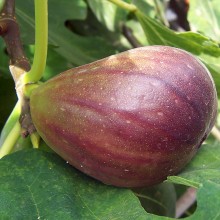 Hunting for Eggs (Treasure!)
Hunting for Eggs (Treasure!)
““Again, the kingdom of heaven is like a merchant in search of fine pearls, who, on finding one pearl of great value, went and sold all that he had and bought it.” (Matthew 13:45–46, ESV)
Finding a pearl is worth 50 on a string. Good Bible teachers like to share the treasure they have found in Scripture, but even better yet, we like to help our students find treasure themselves. Treasure that is given to you is great! But treasure that you find on your own little “exploration in the woods” is invaluable AND you will not soon forget it.
We can use questions to help people look for treasure in the scripture. Don’t make the questions point directly at the answer-that is no fun. What if you were on an Easter Egg Hunt and your mother walked you around the house and pointed to every jelly bean? That would NOT be any fun.
I had an elderly aunt, Aunt Edna. Her husband had been a traveling evangelist and they had never had the chance to have children before he died. Aunt Edna loved children and she always came for Easter. She was more excited about the Easter egg hunt then we children were. She would sneak around and hide more candy while we were in another room hunting there. Then she would say, “I spy, with my little eye…” She would gaze in the direction of the Easter treasure which would be in a place we thought we had already been to.
Teaching is like that. We spy out the treasures in Scripture and then we point people to them, knowing that if our students find the treasure themselves, they will make it their own. In fact, they will be prepared to give up a great deal in order to incorporate that treasure into their life. That is transformational teaching. The point is for the students to find the eggs but it’s not as fun if you get a pre-packaged basket with no hunting involved. Make up questions and depending on your setting, use discussion to help people discover the answers themselves.
This is the basis of inductive teaching, which, for me, is a bit harder than just tell people things. It is more like pointing your students in the right direction knowinbg that the Holy Spirit will guide them to the pearls.
One way of doing inductive teaching is through the use of story telling, especially Bible stories. I have recently stumbled on to a program called Simply the Story It is a method of Bible teaching where by you tell a Bible story and then ask questions to help the listeners find their own treasure. One quote from their handbook is “You can’t just drop a loaf in front of a cage and expect the bird to find the cage. To coax a bird into a cage, lay a trail of bread crumbs. In the same way, when you want to lead people through questions to discover spiritual treasure, most often you need to ask a series of small questions that will easily lead listeners to the truth.
When you teach, try incorporating Bible stories as much as possible. When you tell any story, make it exciting and interesting I using dramatic voices and even sound effects if you are up to it! You will be surprised at the way adults like a good story. I love to tell stories and people seem to love to hear them. You can tell all kinds of stories. Video clips are nice once in while but a story will hit the spot every time.


